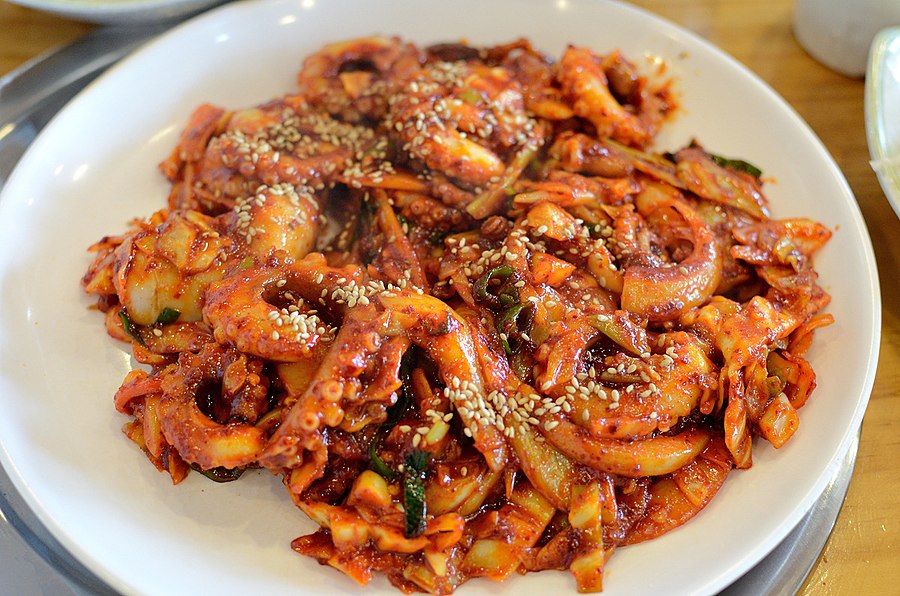Facts About Nakji-bokkeum
Nakji-bokkeum, or stir-fried octopus, is a cherished Korean dish that has been enjoyed for about two centuries, with its formal introduction in 1965. Prior to that, Koreans savored octopus in simpler forms such as raw, dried, or pan-fried. Over time, more complex preparations like nakjisukhoe and nakjibaeksuk were developed. The creation of nakji-bokkeum is attributed to Granny Park Mu-Sun, whose recipe gained popularity in Mugyo-Dong, Seoul. The dish's acclaim led to the establishment of Nakji Center in 1972 to meet the increasing demand.
To prepare nakji-bokkeum, you will need to chop octopus and vegetables such as onions, green onions, cabbage, and carrots. These ingredients are then marinated in a flavorful mixture of gochujang (Korean chili paste), soy sauce, garlic, salt, and sugar before being stir-fried to perfection. The dish is renowned for its spicy kick, usually balanced with a serving of shellfish soup. Octopus is low in calories and often praised for its stamina-boosting properties. Nakji-bokkeum is commonly accompanied by jogaetang (clam stew) to enhance its flavors.
For decades, Mugyo-dong in Seoul has been famous for its exceptional nakji-bokkeum restaurants, attracting culinary enthusiasts since the 1960s.

 North Korea
North Korea